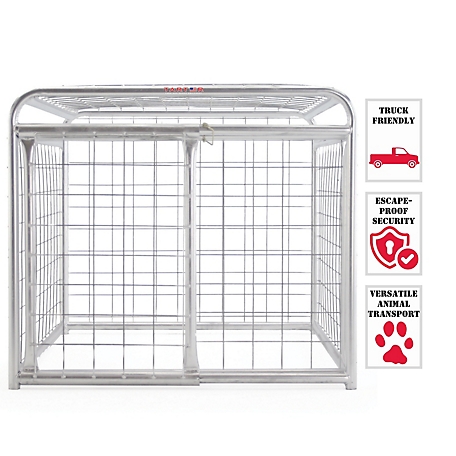Tarter Steel Small Animal Transporter, 53 in.
This Tarter Small Animal Transporter is constructed with high quality galvanized steel to ensure years of reliable and worry-free use. This small animal transporter cage is ideal for moving small animals including pets, calves, goats and other small livestock in virtually any truck bed. for convenience, this Tarter small animal transporter will fit easily into the back of a standard pick-up truck, even if you already have toolboxes stored in there. The steel small animal transporter cage measures 53 inches x 47 inches x 41 inches, and weighs 110 pounds.
This Tarter Small Animal Transporter is constructed with high quality galvanized steel to ensure years of reliable and worry-free use. This small animal transporter cage is ideal for moving small animals including pets, calves, goats and other small livestock in virtually any truck bed. for convenience, this Tarter small animal transporter will fit easily into the back of a standard pick-up truck, even if you already have toolboxes stored in there. The steel small animal transporter cage measures 53 inches x 47 inches x 41 inches, and weighs 110 pounds.
- This convenience small animal transporter fits easily into the back of a standard pick-up truck, even with toolboxes
- The high-quality galvanized steel construction of this small animal transporter cage ensures a virtually escape-proof move
- You can use this versatile Tarter small animal transporter to move goats, hunting dogs, calves, sheep, or other smaller animals
- Dimensions: 53 in. L x 47 in. W x 41 in. H
- Steel small animal transporter cage weight: 110 lb.
Additional information
| Country of Origin | Made in USA |
|---|---|
| Breed Size | Medium |
| Crate Features | Portable |
| Indoor/Outdoor | Outdoor |
| Life Stage | All Life Stages |
| Primary Material | Steel |
| Warranty | Manufacturer Warranty |
| Manufacturer Part Number | GGFS |











by Lucy
Well made Quality materials Nice finish Use shade cloth and chips to make temporary time out for my dog.
by Keith
Easily put up on the back of a pickup and great move small livestock like goats and sheep and calves etc. does the job very well.
by Monica
A good size and easy to maneuver. Fits best in a full size truck.
by Greg
well. i mean it’s a cage people. it ain’t rocket science!